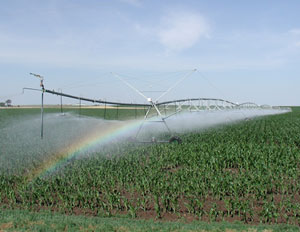 A 25-member panel of researchers that advises the President and Congress on science and engineering issues is calling for more development of sustainable and clean energy sources to transition the country away from fossil fuels.
A 25-member panel of researchers that advises the President and Congress on science and engineering issues is calling for more development of sustainable and clean energy sources to transition the country away from fossil fuels.
The National Science Board has released a draft report entitled “Building a Sustainable Energy Future” for public review and comment:
The NSB recommends that the U.S. government develop and lead a nationally coordinated research, development demonstration, deployment, and education (RD3E) strategy to advance a sustainable energy economy that is significantly less carbon-intensive. A sustainable energy economy values environmental and ecosystem stewardship as well as clean, equitable, reliable, renewable, safe, secure, and economically viable energy strategies and solutions.
The NSB offers priority guidance for the National Science Foundation (NSF) to increase its emphasis on innovation in sustainable energy technologies and education.
“Together, these approaches can help to promote national security by increasing U.S. energy independence, ensure environmental stewardship by reducing energy and carbon intensity, and generate continued economic growth through innovation in energy technologies and increases in green jobs,” said Dan Arvizu, co-chairman of the NSB’s Task Force on Sustainable Energy.
The NSB warns that without concerted international action, there would little change in the global energy mix in the next 25 to 50 years.
You can read the NSB’s report and comment here.


 Kerr led studies that examined how crude glycerin feed supplements affected swine energy use. In five different experiments, he supplemented the diets of starter pigs and finisher pigs with different levels of crude glycerin…
Kerr led studies that examined how crude glycerin feed supplements affected swine energy use. In five different experiments, he supplemented the diets of starter pigs and finisher pigs with different levels of crude glycerin… According to a POET press release, POET Biorefining in Bingham Lake, Minnesota, has used a new technology wich will eliminate water discharge providing a more efficient way to produce ethanol.
According to a POET press release, POET Biorefining in Bingham Lake, Minnesota, has used a new technology wich will eliminate water discharge providing a more efficient way to produce ethanol. The 35 million gallon per year facility currently uses less water than average plants. Bingham Lake facility used 3.42 gallons of water to produce one gallon of ethanol. With zero-liquid discharge, that is cut by 23 percent, to an estimated 2.64 gallons of water per gallon of ethanol.
The 35 million gallon per year facility currently uses less water than average plants. Bingham Lake facility used 3.42 gallons of water to produce one gallon of ethanol. With zero-liquid discharge, that is cut by 23 percent, to an estimated 2.64 gallons of water per gallon of ethanol. A landfill in Dallas, Texas will soon be the source of renewable biomethane that will be burned to create electricity.
A landfill in Dallas, Texas will soon be the source of renewable biomethane that will be burned to create electricity. “This gas sale agreement validates selling renewable biomethane as a valuable, low-carbon fuel. It provides Clean Energy with a sound, long-term revenue stream and also supports expansion of the plant’s production capacity for additional gas sales, including potential use as vehicle fuel,” said Andrew J. Littlefair, Clean Energy president and chief executive officer “Many of our largest customers are showing interest in biomethane for their fleet vehicles as it is one of the best alternative fuels to meet new Low Carbon Fuel Standards coming in California and other states.”
“This gas sale agreement validates selling renewable biomethane as a valuable, low-carbon fuel. It provides Clean Energy with a sound, long-term revenue stream and also supports expansion of the plant’s production capacity for additional gas sales, including potential use as vehicle fuel,” said Andrew J. Littlefair, Clean Energy president and chief executive officer “Many of our largest customers are showing interest in biomethane for their fleet vehicles as it is one of the best alternative fuels to meet new Low Carbon Fuel Standards coming in California and other states.” The nation’s leader in biodiesel making and making biodiesel plants has a new leader of its own.
The nation’s leader in biodiesel making and making biodiesel plants has a new leader of its own. Mr. Oh takes the reins from Nile Ramsbottom, who has served as Renewable Energy Group’s president since the company’s incorporation in 2006. Mr. Ramsbottom’s leadership helped launch REG as a premier producer and marketer of high quality biodiesel. In the nine years Mr. Ramsbottom has served at REG and its predecessor West Central Cooperative, the company’s biodiesel business has grown from a 1 million gallon-per-year batch plant to a network with the more than 300 million gallons of annual production capacity. Mr. Ramsbottom has agreed to forgo full retirement to help strengthen REG’s global presence. The new global sales position will be based in St. Louis.
Mr. Oh takes the reins from Nile Ramsbottom, who has served as Renewable Energy Group’s president since the company’s incorporation in 2006. Mr. Ramsbottom’s leadership helped launch REG as a premier producer and marketer of high quality biodiesel. In the nine years Mr. Ramsbottom has served at REG and its predecessor West Central Cooperative, the company’s biodiesel business has grown from a 1 million gallon-per-year batch plant to a network with the more than 300 million gallons of annual production capacity. Mr. Ramsbottom has agreed to forgo full retirement to help strengthen REG’s global presence. The new global sales position will be based in St. Louis. The 25th anniversary of the Fuel Ethanol Workshop (FEW) is fast approaching – June 15-18, 2009 in Denver, Colorado. Two awards will be presented this year to outstanding industry professionals: The High Octane Award and the Award of Excellence.
The 25th anniversary of the Fuel Ethanol Workshop (FEW) is fast approaching – June 15-18, 2009 in Denver, Colorado. Two awards will be presented this year to outstanding industry professionals: The High Octane Award and the Award of Excellence. The study, published in this week’s edition of the journal
The study, published in this week’s edition of the journal  The need for renewable fuels to replace fossil fuels is becoming more and more of a global necessity.
The need for renewable fuels to replace fossil fuels is becoming more and more of a global necessity.  Carbon dioxide has become an enemy of the Earth for its role in contributing to global climate change. One man wants to stop this unfair protrayal of “our friend carbon”. Dr. Norman Airs, the executive director of
Carbon dioxide has become an enemy of the Earth for its role in contributing to global climate change. One man wants to stop this unfair protrayal of “our friend carbon”. Dr. Norman Airs, the executive director of  As so many ethanol plants have closed in recent months, invester-owned ethanol start-up One Earth Energy LLC is planning to begin production on June 11, 2009. The 100 million gallon plant is located near Gibson City, Illinois.
As so many ethanol plants have closed in recent months, invester-owned ethanol start-up One Earth Energy LLC is planning to begin production on June 11, 2009. The 100 million gallon plant is located near Gibson City, Illinois.